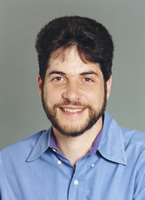Press Release: Carnegie Mellon's Jon Peha Urges Government Officials To Improve Emergency Communications
Contact: Chriss Swaney / 412-268-5776 / swaney@andrew.cmu.edu
 PITTSBURGH—Phony 911 calls, radio static and loss of cellular reception remain just a few of the communication challenges posed by the recent Boston Marathon terrorist attacks.
PITTSBURGH—Phony 911 calls, radio static and loss of cellular reception remain just a few of the communication challenges posed by the recent Boston Marathon terrorist attacks.
While the tragedy is still being analyzed, Carnegie Mellon University's Jon Peha urges U.S. government officials to allow emergency responders to use commercial services on a priority basis during a crisis.
In 2012, Congress voted to create FirstNet, the first nationwide communications network for emergency responders, such as firefighters, police and paramedics. As a result of the new network, many people are talking about building out new infrastructure.
But in a summer 2013 article in Issues in Science and Technology, Peha outlines a strategy for emergency officials to take advantage of infrastructure already built out by the private sector.
"While building new infrastructure is useful in the long term, to get the most benefit from a limited budget in the shortest amount of time, FirstNet's initial priority should instead be to take advantage of infrastructure already built out by the private sector," said Peha, a professor in CMU's departments of Engineering and Public Policy and Electrical and Computer Engineering.
"This can be done by reaching 'priority roaming' agreements with commercial companies, thereby allowing emergency responders to use commercial services on a priority basis during an emergency," said Peha, former chief technologist for the Federal Communications Commission (FCC),
His research shows that using 'priority roaming' can increase capacity. There are roughly three million U.S. firefighters, police and emergency medical service workers, but the commercial cellular infrastructure was designed to support more than 320 million subscribers. "So, even in severe emergencies like the Boston Marathon incident, commercial networks can offer more capacity than prominent public safety groups have estimated they would need, and still have a lot of capacity left for civilian users," Peha said.
CMU's research shows that being able to roam onto two networks increases capacity available to public safety by far more than the obvious factor of two, because devices such as mobile video cameras that require high-data rates can connect to the closer cellphone tower, regardless of the provider.
Peha, former technology policy adviser for the White House, also recommends the development of multi-band mobile devices.
"Infrastructure is worthless without mobile devices to use it," he said. "To obtain the benefits of priority roaming, devices must operate in the 20 MHz public safety band as well as bands operated by multiple commercial carriers.
"FirstNet should be positioned to provide emergency responders with high-speed mobile data services and that will only come if it leverages commercial technology and commercial infrastructures. If we do not act now to improve our emergency communications, there is a danger that states and municipalities will go their own separate ways," Peha said.
The research was partially funded by the MacArthur Foundation.
###
Jon Peha, pictured above, is urging U.S. government officials to allow emergency responders to use commercial services on a priority basis during a crisis.